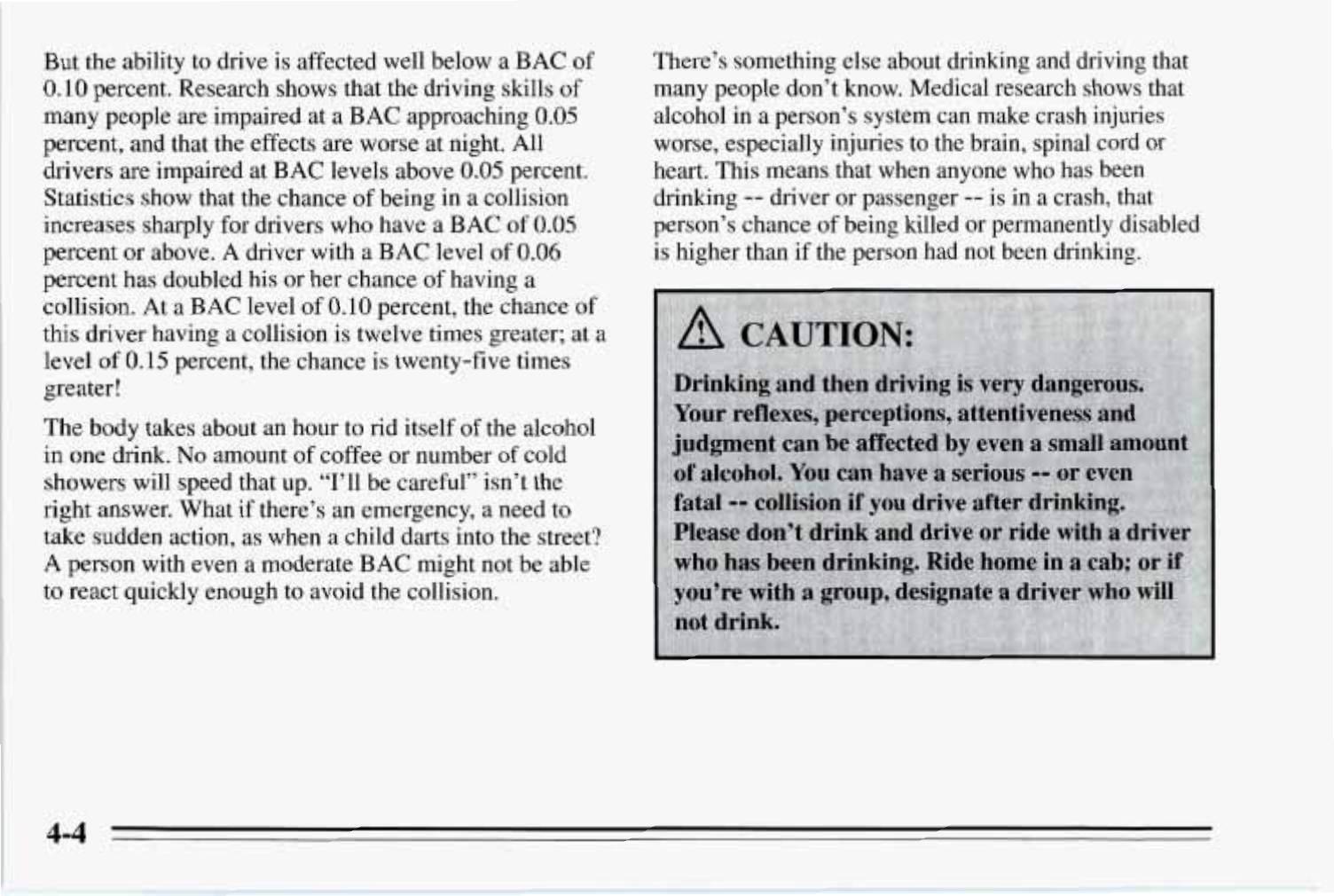
But the ability to drive is affected well below a
BAC
of
0.10
percent. Research shows that the driving skills
of
many people are impaired at a
BAC
approaching
0.05
percent, and that the effects are worse at night. All
drivers are impaired at
BAC
levels above 0.05 percent.
Statistics show that the chance of being in
a
collision
increas’es sharply for drivers who have a
BAC
of
0.05
percent or above.
A
driver with a
BAC
level of
0.06
percent has doubled his or her chance of having a
collision. At a
BAC
level of 0.10 percent, the chance of
this driver having a collision
is
twelve times greater; at a
level
of
0.15 percent, the chance is twenty-five times
greater!
The body takes about an hour to rid itself of the alcohol
in
one
drink.
No
amount of coffee or number of cold
showers will speed that up. “I’ll be careful” isn’t the
right answer. What
if
there’s an emergency, a need to
take sudden action, as when a child darts into the street?
A
person with even a moderate
BAC
might not be able
to react quickly enough to avoid the collision.
There’s something else about drinking and driving that
many people don’t know. Medical research shows that
alcohol in a person’s system can make crash injuries
worse, especially injuries to the brain, spinal cord or
heart. This means that when anyone who has been
drinking
--
driver or passenger
--
is in a crash, that
person’s chance of being killed or permanently disabled
is higher than if the person had not been drinking.
4-4


















